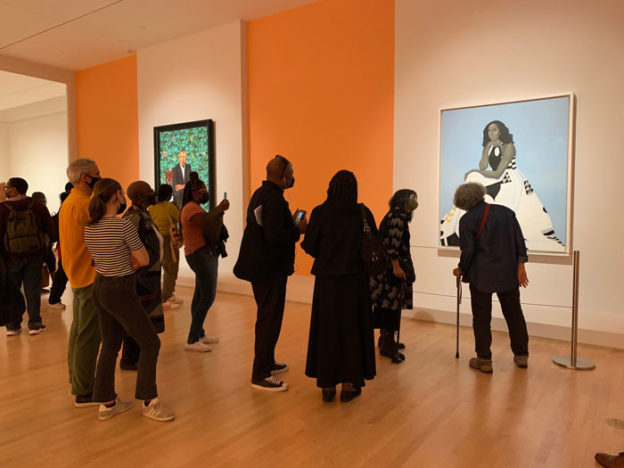It’s surprisingly moving to see the Obama Portraits which are currently on a tour of cultural institutions around the United States and are on view at The Brooklyn Museum through this Sunday October 24. I bet I’m not the only person who got a bit weepy upon walking into the exhibition & catching sight of the paintings. People lingered in the space, standing close and looking, stepping away to chat or look at the film about the works running in a side room, then returning to the paintings. No one seemed to want to leave and everyone wanted a selfie or a picture of themselves in front of each, myself included.
okay I’ll get that part out of the way right up front:
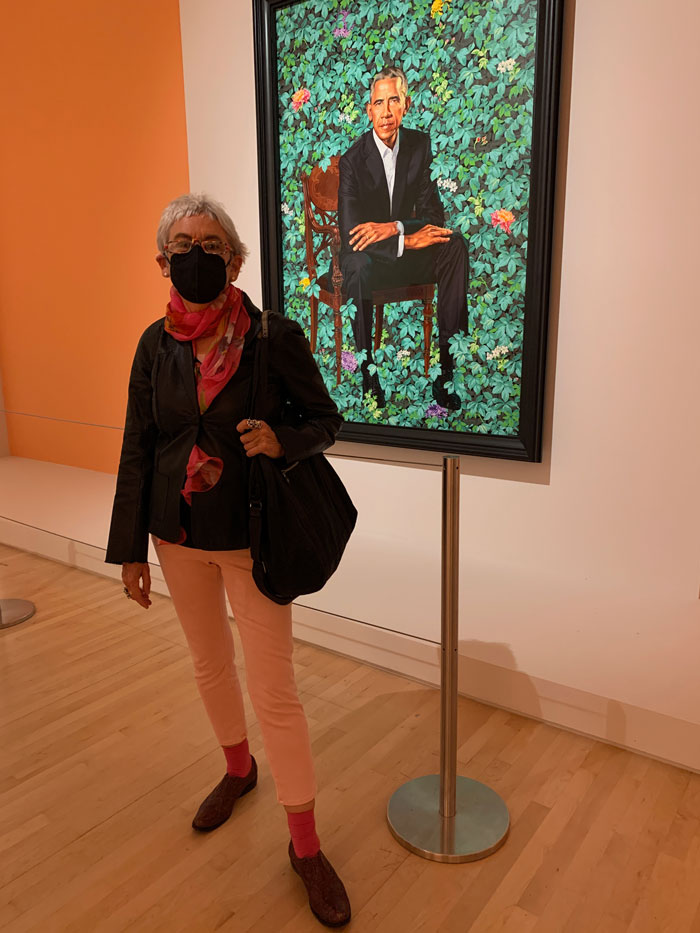
I think it is fair to say that for the many Black visitors, it was an essential aspect of the event and it is particularly moving to witness how Black viewers engaged in this memorialization–something that the Obamas fully understood, took into account, and mentioned when the works were unveiled, but it mattered to everyone present. It is certain that after the ongoing, bruising, treasonous assaults on the most basic decency in the body politic over the last few years, there is a deep sense of loss and of nostalgia for a time when we had a President and First Lady who symbolically and in their personal behavior in their public roles were exceptional.

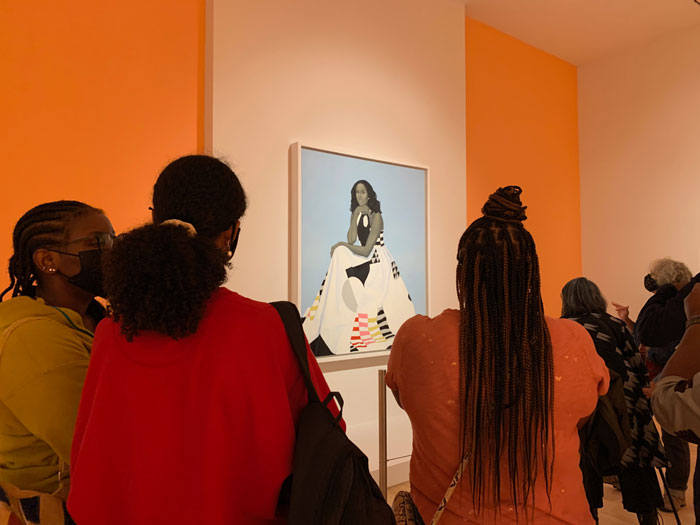
Indeed, the portraits themselves exemplify how the Obamas approached the symbolism & communicative meaning of every aspect of their public role, notably in their thoughtful and, historically speaking, groundbreaking choices of artists Kehinde Wiley and Amy Sherald, and in their collaborative embrace of the formal and symbolic approaches chosen by these two artists for their portraits.
I had watched the public unveiling of the portraits online with moving and interesting remarks by the Obamas and by the artists and I had seen many pictures of the work but was curious what they would look like in person, since both artists relied on photo sessions & each, though very different as painters, has a flat painting technique.
Seen in person, the paintings hold their own as paintings, in addition to their symbolic importance and role as events. Though both flat paintings in oil, they operate differently on the spectrum of photo to painting.
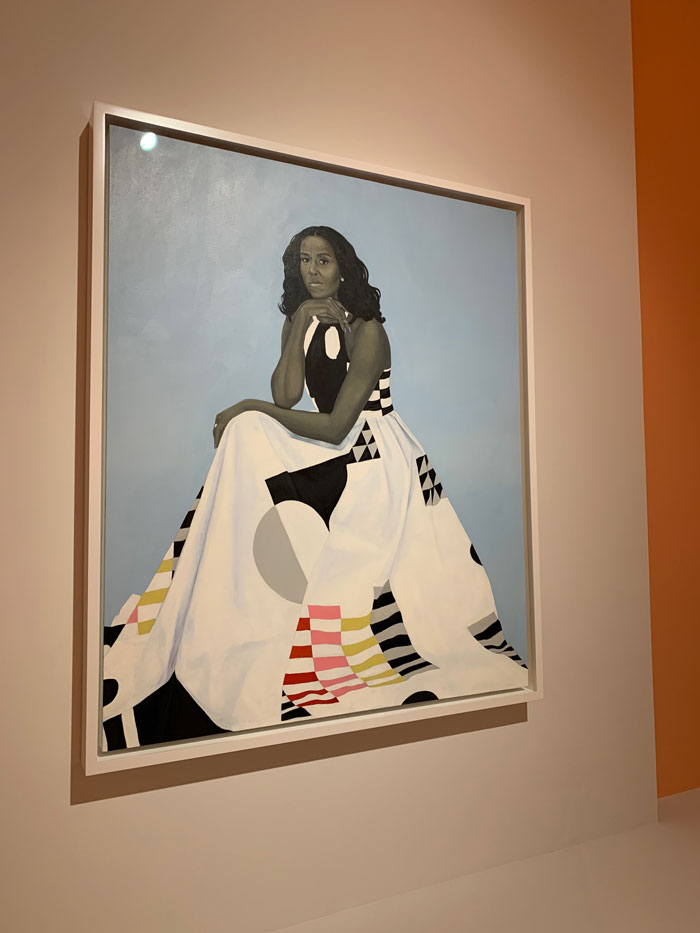

Sherald’s Michelle Obama is a bit less resembling or less evidently photo-based, and the dress and the exquisite blue ground operate independently as beautiful abstract elements, with Sherald’s trademark grisaille representation of Black skin creating a pensive even mysterious mood, capturing the reflective private character of this publicly ebullient and outgoing figure. Speaking as a painter who was curious about the physicality of the surface, I did notice that unless viewed frontally, the skin area is painted with enough medium to be unevenly reflective, unlike the rest of the painting surface.

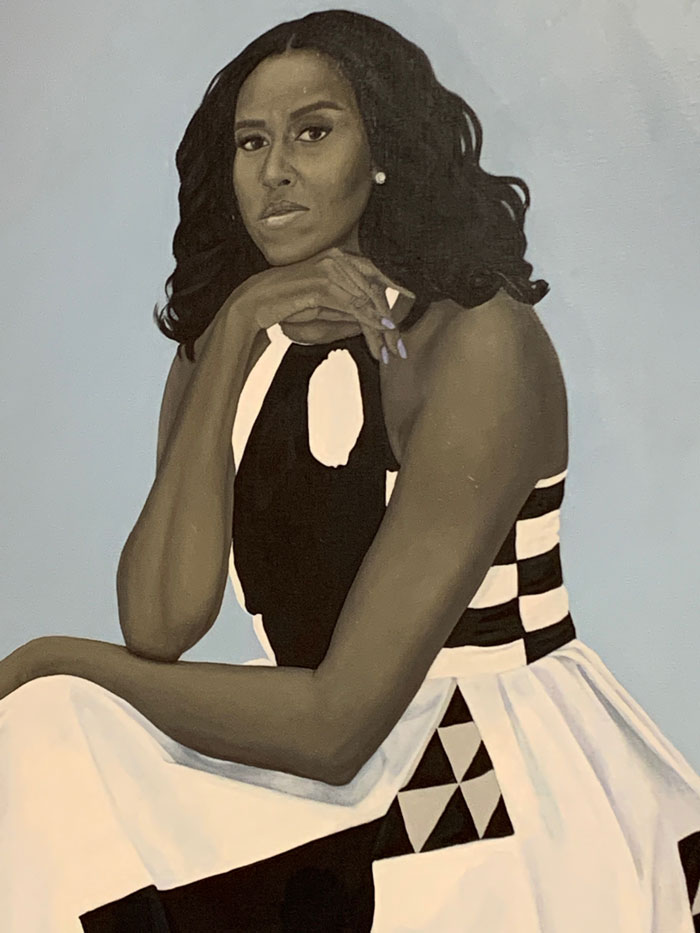
Wiley’s Barack Obama is a painting that is much more evidently based on photography in its brighter more artificial lighting, its frontality, and its surface. While Sherald’s Michelle Obama sits at some distance from the picture plane, protected from us by the expansive field of her remarkable abstract patterned silk dress, Wiley’s Obama sits much closer to the picture plane, leaning towards us with authority and with the slight coldness which is a facet of his remarkably self-contained character. He is up in our face, daring us to react to or contest his being.
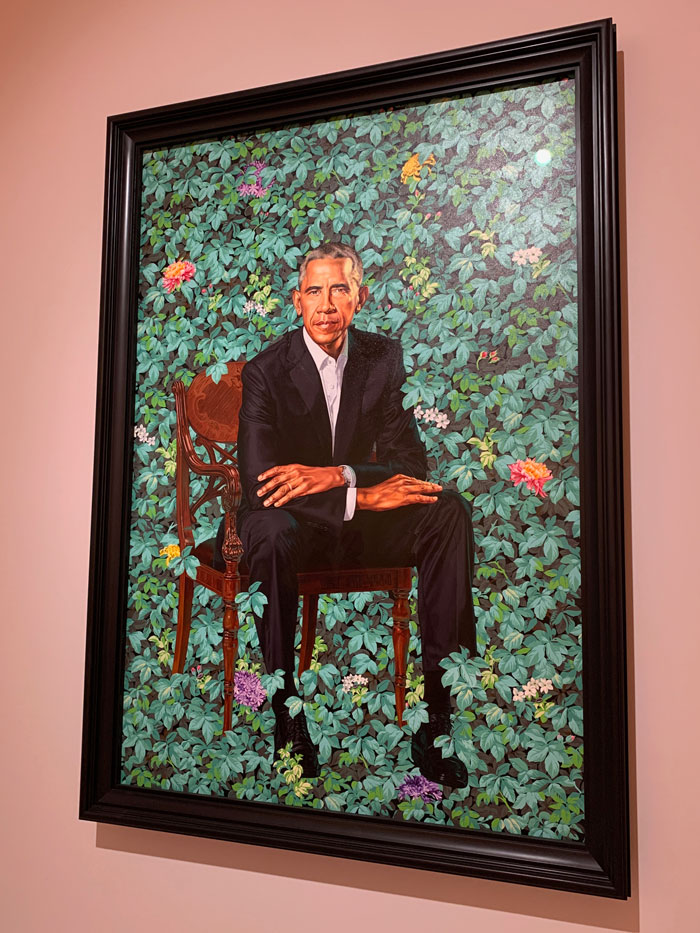
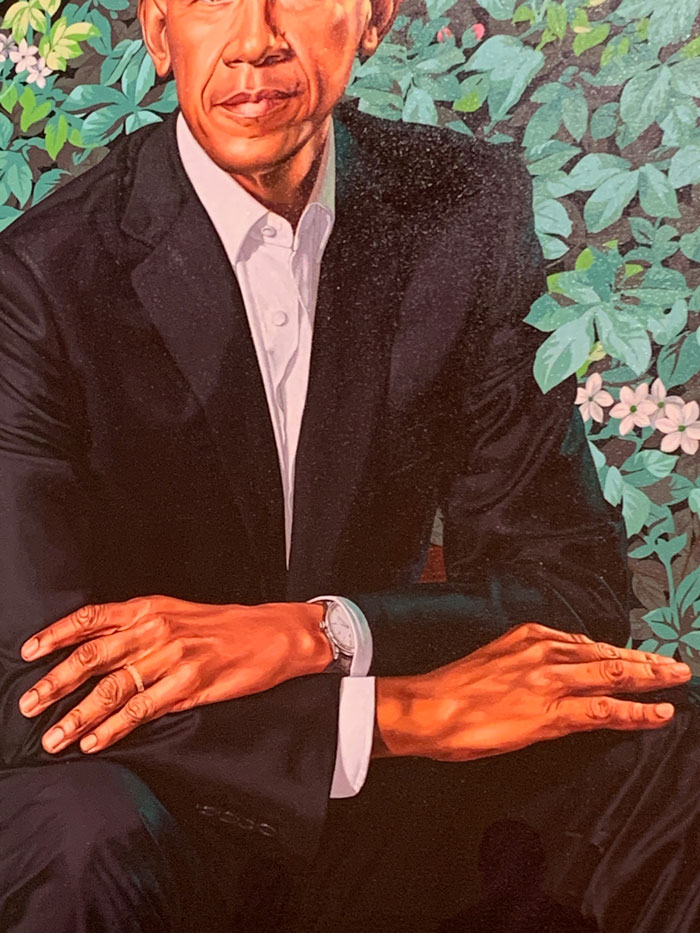
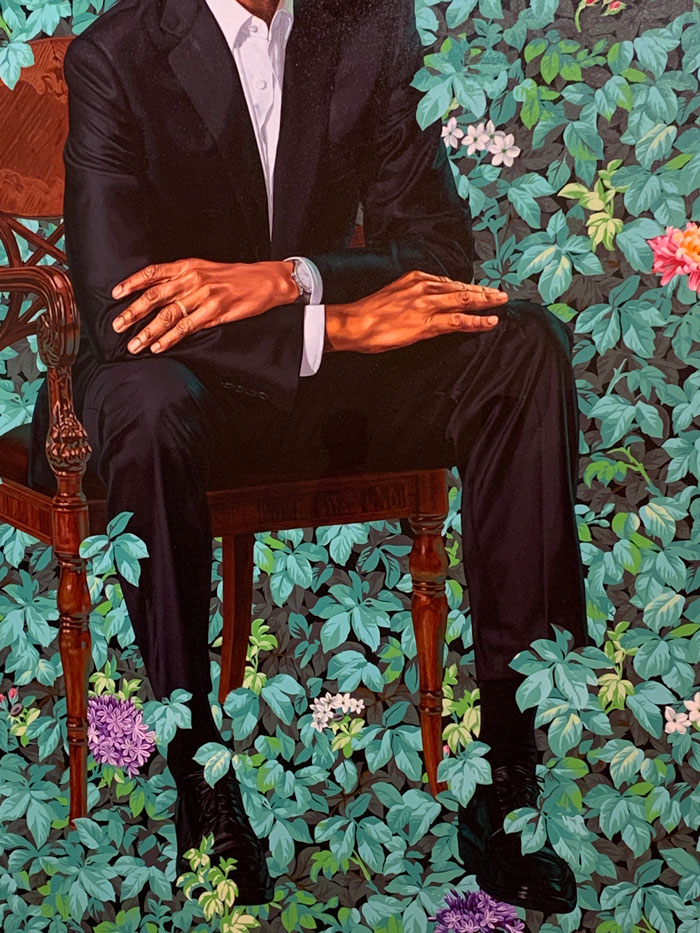
Obama is seated in a chair which is in front of a wall of vines and flowers. This was considered a somewhat curious and unusual choice for an official state portrait when the painting was first revealed to the public, and yet it is remarkably effective in conveying the duality of Obama’s personality: leaning towards us is the powerful man, with large exquisitely drawn hands and a big most likely expensive watch just peeking from his jacket and shirt cuff. This is the official man, the man of power. The leaves and flowers represent the exotic background not just of the painting but the unusually diverse backgrounds of the person, the man with the Kenyan father, the childhood in Indonesia, the adolescence in Hawaii, the political career in Illinois, the Otherness of this quite unique individual who despite of and also because of all this complexity and exoticism, reached centrality in our troubled country.
The most interesting moment in the Barack Obama portrait is at the foot of the painting, where Obama’s feet meet the ground, except that is not exactly what is happening: it is more that he seems to be floating in space at that point in the painting, again emphasizing the complexity of Obama as a historical and public figure and perhaps, as also in the reflective and slightly melancholy though regal representation of Michelle Obama by Amy Sherald, reminding us in our current moment of political trauma, insecurity and, sadly, mediocrity, that there was a moment when this remarkable couple were the President and First Lady of the United States of America.
*
The Obama Portraits tour runs through May 2022. Upcoming venues include:
Los Angeles County Museum of Art; Los Angeles—Nov. 7, 2021–Jan. 2, 2022 High Museum of Art; Atlanta—Jan. 14, 2022–March 20, 2022 The Museum of Fine Arts, Houston; Houston—April 2, 2022–May 30, 2022

